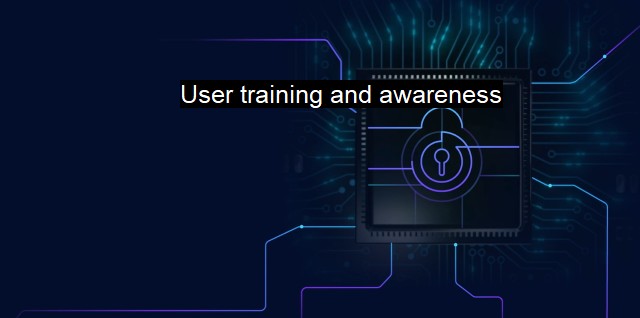What are User training and awareness?
The Importance of User Training in Safeguarding Against Cyber Threats: A Comprehensive Guide to Cybersecurity and Antivirus Awareness Training
User training and awareness in the context of cybersecurity and antivirus refers to the education and training of users on how to protect themselves from various cyber threats and risks. This form of training is essential in ensuring the safety and security of an organization and its assets.As technology continues to evolve and advance, cyber threats have become more complex, making it easier for hackers and other malicious actors to breach security systems and gain access to sensitive data. In order to protect themselves from these threats, organizations need to train their users on how to identify and respond to various threats.
User training on cybersecurity and antivirus may include topics such as:
1. Phishing attacks: Phishing is a common tactic used by hackers, in which they attempt to steal login details or other sensitive data. User training can teach employees on how to identify phishing emails or websites, and what actions to take if they encounter such attacks.
2. Password security: Weak passwords is one way hackers gain entry to an organization’s system. User training usually educates employees on how to create strong passwords, and how often to change them to increase the security of their accounts.
3. Email security: Email threats, such as malware attachments and spam, usually present some of the biggest security risks. Safe e-mail practices, such as keeping virus software up to date and not opening attachments from unknown sources, can help minimize this risk.
4. Antivirus usage: Every user of a computer or device should have their product protected by an antivirus. This includes updating of antivirus solutions to run virus scans to make sure their systems are secure.
5. Using public Wi-Fi: Use of public Wi-Fi and portable media that employees bring to work create strong vulnerabilities. Educating users on safe practices while using a public Wi-Fi network, like never utilizing Wi-Fi networks without security or sharing passwords can minimize the risk of exposure to data.
By educating users on safe practices, an organization can significantly reduce the likelihood of a successful cyber attack. Educated and alert users can detect unusual activities such as phishing or ransomware attacks before these attack techniques spread in the network and harm the organization.
user training and awareness is critical in ensuring the safety and security of an organization. While it is important to have security software in place to protect the network, it is even more critical to have educated users who can complement these measures by identifying and responding to threats effectively. Even the strongest security system is susceptible to flaws without the commitment to being aware of emerging cybersecurity trends and staying vigilant on safe computing just as employees certainly cannot do without a mechanism to prevent, deter or report cyber incidents.

User training and awareness FAQs
Why is user training and awareness important in cybersecurity?
User training and awareness is important in cybersecurity because most security breaches happen due to human error. By educating and training employees, they become better equipped to identify and report potential threats, adopt best practices for information security, and ultimately help prevent cyber attacks.What topics should be covered in user training and awareness sessions for cybersecurity?
User training and awareness sessions for cybersecurity should cover topics such as password security, phishing scams, social engineering attacks, email security, data protection, and safe web browsing practices.How often should user training and awareness sessions be conducted?
User training and awareness sessions for cybersecurity should be conducted at least once a year. However, it's important to consider the ever-evolving landscape of cybersecurity threats and adjust the frequency of training accordingly. Regular refreshers or additional training may be necessary when new threats emerge or when there are changes to company policies or procedures.How can I measure the effectiveness of user training and awareness sessions for cybersecurity?
You can measure the effectiveness of user training and awareness sessions for cybersecurity by conducting assessments and tests to evaluate employee knowledge and understanding. You can also monitor the number of security incidents or breaches that occur before and after the training sessions to see if there is a noticeable decrease. Additionally, feedback from employees and managers can provide insight into how well the training was received and whether or not it was effective.| | A | | | B | | | C | | | D | | | E | | | F | | | G | | | H | | | I | | | J | | | K | | | L | | | M | |
| | N | | | O | | | P | | | Q | | | R | | | S | | | T | | | U | | | V | | | W | | | X | | | Y | | | Z | |
| | 1 | | | 2 | | | 3 | | | 4 | | | 7 | | | 8 | | |||||||